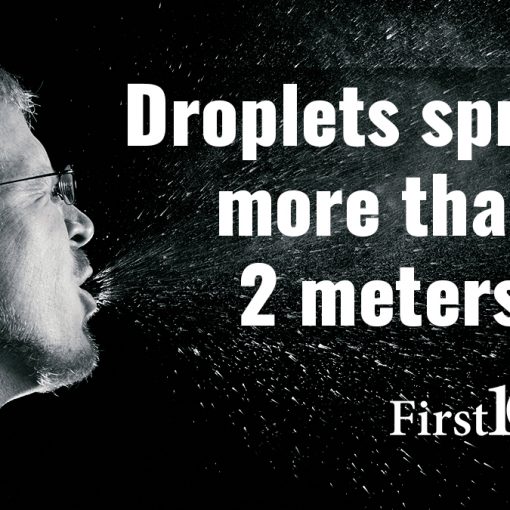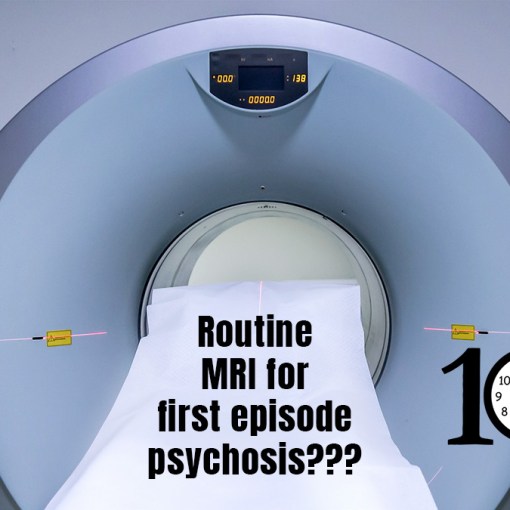One of the very first medical myths I encountered was the packing of abscesses. It is pretty clear that packing provides no benefit in small abscesses, but significantly increases pain for our patients. (Barnes 1988; O’Malley 2009; Kessler 2012) Knowing that, I have always been confused about the management of Bartholin’s abscesses. Although exquisitely painful, these are relatively small abscesses in an area of the body with excellent vascularity and healing. It makes sense to manage them exactly like any small abscess, but I have always been taught that these abscesses absolutely required packing – and not just any packing, but the special (and sometimes hard to find) Word catheter. Was this evidence-based teaching, or just another medical myth handed down from generation to generation? Let’s look at some evidence.
The theory is that leaving a Word catheter in place will prevent wound healing, resulting in an epithelialised fistula that will prevent future abscess recurrence. However, the evidence that these catheters do anything of the sort is severely lacking.
Observational data
Let’s start with the observational trials, because this is the data that has driven our practice for decades, and it is always interesting to take a historical perspective on modern medical practices.
Word B. Office treatment of cyst and abscess of Bartholin’s gland duct. Southern medical journal. 1968; 61(5):514-8. PMID: 5648698
This is the one: the original paper by Dr. Word. It is a case series (with very limited information) of 68 women with Bartholin’s cysts or abscesses (40 cysts and 32 abscesses), all treated with variations of the Word catheter as he developed it. There were no recurrent infections, but the cyst recurred in 2 patients (1 at 6 months and 1 at 5 years after the procedure). No data is provided about catheters falling out, but it sounds like he sutured them to the labia in this cohort. There is no mention of minor adverse events, but there were 2 significant adverse events: a necrotic abscess caused by erosion of the balloon into the cutaneous surface of the labia and a patient requiring admission because the catheter was inserted between the vestibular mucosa and the cyst wall.
Yavetz H, Lessing JB, Jaffa AJ, Peyser MR. Fistulization: an effective treatment for Bartholin’s abscesses and cysts. Acta obstetricia et gynecologica Scandinavica. 1987; 66(1):63-4. PMID: 3604594
This is a case series of fistulization using a Word catheter. They include 46 patients who were treated over a period of 12 years. Only 4/46 patients (9%) had their catheter fall out before the end of their treatment period. A significant number of patients required a repeat procedure (8/46; 17%) at a mean of 9 months later. They did not report any information about safety or adverse events.
Haider Z, Condous G, Kirk E, Mukri F, Bourne T. The simple outpatient management of Bartholin’s abscess using the Word catheter: a preliminary study. The Australian & New Zealand journal of obstetrics & gynaecology. 2007; 47(2):137-40. PMID: 17355304
This is a prospective case series of 58 women with Bartholin’s abscesses. 23 underwent marsupialization and 35 had a Word catheter placed. The physician failed to place the word catheter in 1 of the 35 patients. 7 of the Word catheters fell out (3 in the first 24 hours and the remaining 4 by 11 days). 7 of these 8 patients did fine, but there was a recurrent abscess in 1 patient in whom the catheter fell out at 24 hours. The word catheter successfully resulted in epithelialization in 27/35 (77%) of women. There was mild to moderate discomfort in a handful of patients (maybe 10 – the manuscript is not clear). There were no recurrences at 6 months in either the Word catheter or the marsupialization groups. The author’s conclusion is that the Word catheter is probably a safe and effective alternative to surgery, but this doesn’t help us understand how this compares to simple I&D.
So in total there are 149 women represented here. Patients generally did well, but the recurrence rate was has high as 17% within a year. There were a number of adverse events, both minor and significant, but the exact rate is unclear.
Of course, the problem with all of these studies is the lack of a control group. We have no idea how these women would have fared with a simple incision and drainage as compared to using the Word catheter. Although relatively safe, mild to moderate discomfort should be anticipated, and there have been a couple significant adverse events reported.
RCT #1: Word catheter vs Marsupialization
I started this write up 3 years ago, but never finished. At the time, I was somewhat discourage by the lack of RCTs on the topic. Coming across this this new study prompted me to finish the write up, even though the data probably doesn’t help emergency doctors a lot.
B Kroese JA, van der Velde M, Morssink LP, et al. Word catheter and marsupialisation in women with a cyst or abscess of the Bartholin gland (WoMan-trial): a randomised clinical trial. BJOG : an international journal of obstetrics and gynaecology. 2017; 124(2):243-249. PMID: 27640367
This is a multicenter, open-label, randomized controlled trial that included 162 women with a symptomatic cyst or abscess of the Bartholin’s gland that required treatment. Women were randomized to either a Word catheter or a marsupialization. The primary outcome was recurrence on the same side within 1 year. Follow up was excellent. Recurrence requiring treatment at 1 year was the same in both groups (12.2% vs 10.3%; RR = 1.11; 95% CI 0.64–1.91; P = 0.70). Overall recurrence (not everyone needed treatment) was also the same (23% vs 18%; RR = 1.2; 95% CI 0.77–1.83; P = 0.41). Pain was higher during the Word catheter insertion than during marsupialization, but looked similar at follow-up. They do not report any data on adverse events.
Obviously, we are not performing marsupialization procedures in the emergency department, so this data is not directly applicable. It is good to know that Word catheters aren’t any worse that the “gold standard” procedure. Unfortunately, what I really want to know is whether either of these procedures is any better that incision and drainage alone. I do think the numbers from this trial, being a prospective RCT rather than a case series, are probably more reliable than those in these observational trials. Therefore, I think the best estimate for the recurrence rate of Bartholin’s abscesses is 12-23%.
RCT #2: Marsupialization vs incision and drainage.
There is no direct comparison of Word catheter to simple incision and drainage. However, the first RCT indicated that marsupialization and Word catheter probably have the same outcomes. Therefore, a comparison of marsupialization and I&D might help us.
Andersen PG, Christensen S, Detlefsen GU, Kern-Hansen P. Treatment of Bartholin’s abscess. Marsupialization versus incision, curettage and suture under antibiotic cover. A randomized study with 6 months’ follow-up. Acta obstetricia et gynecologica Scandinavica. 1992; 71(1):59-62. PMID: 1315100
This is an RCT that randomized 36 women with Bartholin’s abscesses to either marsupialization or “Ellis’ method”. The Ellis method involves a simple incision and drainage, followed by a curettage of the wall of the abscess, and then the incision is actually sutured closed. All patients were treated with antibiotics (clindamycin). There were no statistical differences between the groups. There were 2 recurrent abscesses in the primary closure group (11%) versus none in the marsupialization group, but the difference was not statistically significant. They do note that in the year before this study, recurrence occurred in 2 out of 19 patients (11%) undergoing marsupialization.
Obviously this data is imperfect. A 11% difference between the 2 groups could be important, but small numbers allow for statistical anomalies. The recurrence rate in the I&D group was the same as the historical controls, and the same as we saw in the other studies above. This procedure sounds pretty similar to a standard I&D, but had some differences. The curettage is more aggressive than a simple I&D, but we also don’t usually suture our I&Ds closed. It isn’t clear how those differences would impact practice.
Finally, a Systematic Review on Bartholin’s Management
Wechter ME, Wu JM, Marzano D, Haefner H. Management of Bartholin duct cysts and abscesses: a systematic review. Obstetrical & gynecological survey. 2009; 64(6):395-404. PMID: 19445813
This is a systematic review looking at any treatment modalities for Bartholin duct cysts and abscesses. They excluded non-English trials, and any trials before 1982. They include 24 trials, but there were only 5 controlled trials, with the vast majority being case series. So, this is an imperfect review of imperfect trials, but I think it represents the best evidence available. Some takeaways:
- There are lots of different options for managing this condition, including silver nitrate ablation, carbon dioxide laser, needle aspiration, marsupialization, simple I&D, alcohol sclerotherapy, and fistulization (of which the Word catheter is only one of multiple options).
- No treatment option appears better than any other, but the evidence is very weak across the board.
- Incision and drainage followed by silver nitrate cautery to the interior of the cavity had a 0-4% recurrence rate, but the 6 trials only included 183 total patients.
- Needle aspiration might be an option. There were 4 trial that included a total of 99 patients. There were 6 total recurrences (5 in 1 trial), which would equate to an overall rate of 6%. The actual recurrence rates in the studies varied from 0-17%. This is pretty consistent with all other treatment options.
- The recurrence rate in 3 fistulization studies ranged from 4-17%, again very similar to every other technique.
Summary
There is no easy answer. Looking at this evidence, there clearly is no absolute gold standard treatment. The best conclusion is simply: we don’t know.
There is no evidence that indicates that using a Word catheter is any better than a simple I&D. However, there is also no evidence that proves that the Word catheter is unnecessary. We just don’t know.
My best guess is that the Word catheter can be tossed in the myths pile. It became the standard therapy on the back of a few methodologically poor case series. There is no real reason to believe it works. Comparing failure rates of the various treatment options, they all seem pretty similar. There aren’t head to head comparisons, but I can’t see any reason to think that one option is any better than another.
I will probably incorporate more needle aspiration into my practice. If the recurrence rate is similar, this seems like a friendlier option for patients. Simple incision and drainage will probably remain my primary technique, with more advanced interventions like silver nitrate and Word catheters reserved for more complicated patients, or recurrent abscesses.
Ultimately, I will probably leave the decision up to the patient, although shared decision making can be difficult when so little is known. I really can’t quote any specific benefits or risks for any of the procedures. I will quote a recurrence rate between 10% and 20% no matter what the procedure, describe what is involved, and help the patient decide what is best for her.
References
Andersen PG, Christensen S, Detlefsen GU, Kern-Hansen P. Treatment of Bartholin’s abscess. Marsupialization versus incision, curettage and suture under antibiotic cover. A randomized study with 6 months’ follow-up. Acta obstetricia et gynecologica Scandinavica. 1992; 71(1):59-62. PMID: 1315100
Bakour S. WoMan-Trial RCT: word catheter for the treatment of Bartholin cyst or abscess appears to be more cost effective than the conventional incision and drainage. BJOG.. 2017; 124(2):250. PMID: 27813283
Barnes SM, Milsom PL. Abscesses: an open and shut case! Archives of emergency medicine. 1988; 5(4):200-5. PMID: 3069102
Haider Z, Condous G, Kirk E, Mukri F, Bourne T. The simple outpatient management of Bartholin’s abscess using the Word catheter: a preliminary study. The Australian & New Zealand journal of obstetrics & gynaecology. 2007; 47(2):137-40. PMID: 17355304
O’Malley GF, Dominici P, Giraldo P, et al. Routine packing of simple cutaneous abscesses is painful and probably unnecessary. Academic emergency medicine : official journal of the Society for Academic Emergency Medicine. 2009; 16(5):470-3. PMID: 19388915
Kessler DO, Krantz A, Mojica M. Randomized trial comparing wound packing to no wound packing following incision and drainage of superficial skin abscesses in the pediatric emergency department. Pediatric emergency care. 2012; 28(6):514-7. PMID: 22653459
Wechter ME, Wu JM, Marzano D, Haefner H. Management of Bartholin duct cysts and abscesses: a systematic review. Obstetrical & gynecological survey. 2009; 64(6):395-404. PMID: 19445813
Word B. Office treatment of cyst and abscess of Bartholin’s gland duct. Southern medical journal. 1968; 61(5):514-8. PMID: 5648698
Yavetz H, Lessing JB, Jaffa AJ, Peyser MR. Fistulization: an effective treatment for Bartholin’s abscesses and cysts. Acta obstetricia et gynecologica Scandinavica. 1987; 66(1):63-4. PMID: 3604594
Morgenstern, J. What’s the word on Word catheters?, First10EM, June 11, 2018. Available at:
https://doi.org/10.51684/FIRS.5984






5 thoughts on “What’s the word on Word catheters?”
It a bloody mess of evidence!
I have always been taught and taught marsupialization….
maybe that is an Aussie thing!
Casey
One of the key indicators of an evidence vacuum: people practice completely differently in different parts of the world.
I have been told it is absolutely below the standard of care not to use a Word catheter; that the “evidence is overwhelming”.
I have also heard of patients being transferred between hospitals because one facility doesn’t stock Word catheters.
As a patient who just underwent the procedure (incision and drainage followed by word catheter), it’s a bummer to read about the less than ideal data on the subject. The discomfort of the catheter would be nice to avoid if there was no real benefit.
Hi Justin, I am currently researching BCs and the treatment of women in this under-investigated clinical area. Great article, do you have any follow up?
I did a quick search before a talk recently, and couldn’t find any new publications, but I haven’t done anything more systematic